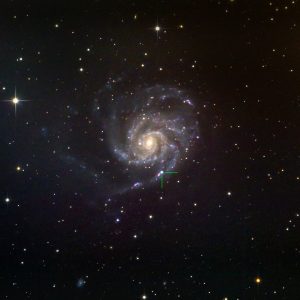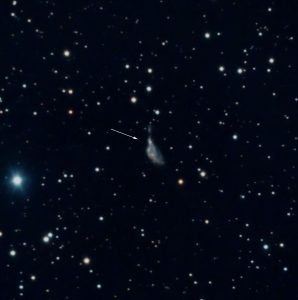2023 June 5
Deep Sky Update – May 2023
It’s amazing how light the ‘night’ sky is up here at 59 degrees north currently. And also how quickly the sunset is moving north too. But it’s enjoyable too. With little or no opportunity for deep sky (and we’ve not had a clear night sky here for weeks), I have been turning to a few solar observing sessions on those occasions when we have had a sunny day. Sometimes it is a bit of a battle with the wind, vibrating the telescope and mount. Hopefully it won’t be too long until the observatory is up and running again – the area for the concrete pad is laid out, and a local contractor is going to supply the concrete pre-mixed, once I have dug it out and shuttered the pad. I am still worried about how the dome will cope with the high winds we occasionally get – I am planning on various tie-downs and guy ropes, I guess only time will tell!
Autumn Deep-Sky Zoom
I am planning on holding a Deep-Sky-Zoom section meeting in the autumn, either late September or early October. It will just be a short session of 1 to 2 hours, and if anyone would like to give a 20 or 30 minute presentation on any of your current or future projects or any other deep sky topic that would be great – just let me know. Further details to come.
Section Meeting 2024
I have also started planning the 2024 Section Meeting. I am thinking about April 20th or 27th – which are both near Full Moon, so should not coincide with any star camps, at least. Maybe if anyone is aware of any major events around those dates you could let me know. I have yet to decide on a venue – so if you would like to help organise the meeting in your local area, please get in touch.

Supernova in M101
I am glad lots of you managed to get a view of the supernova in M101 – SN 2023ixf. It seems to have rapidly brightened from magnitude 12 to nearly 11, and remained at about 11 for a few days but now seems to be slowly fading, and was about magnitude 11.2 on the night of June2/3 by Ian Sharp’s photometry. Still worth following, though, if you get the chance.
Black holes in Globular Clusters
There was an interesting paper published in Monthly Notices of the RAS recently about the possibility of an Intermediate Mass Black Hole (IMBH) in the globular cluster Messier 4. An IMBH will have a mass in the range 100 to 1000 solar masses, and is too massive to have formed from the implosion of a single star, and must indicate some sort of combining of black holes. Detailed analysis of stars in M4 suggests that there may be an IMBH in M4 (not necessarily at its core) or that there may be a group of several smaller black holes. The paper is not a particularly easy read, but may be of interest to skim through.
https://academic.oup.com/mnras/article/522/4/5740/7169309
[incidentally, this paper is open for all to read, I think. But MNRAS will be going Open Access in 2024, so the whole range of papers from the first volume of MNRAS onwards will be available to read for free]
May Object of Interest
May’s object was NGC 6229 – the third globular cluster in Hercules. Many thanks to everyone that had a go at imaging it – obviously not as hard as last month’s target (or perhaps the weather was just better!); Pat Devine, Graham Winstanley, Alan Thomas, Ian Papworth, Richard Sargent and Iain Cartwright – Gant Privett also posted his image from 2022.
You can view those posted by members to their albums in the Object of Interest Gallery
June Object of Interest
For June I have moved just a little eastwards from Hercules to Lyra. Although Lyra is a pretty small constellation, it does have a number of deep sky splendours. One that gets less attention, though, is NGC 6745 an irregular spiral. There are reported two or three components (A, B and C), though it is now thought that there are only two galaxies interacting. Surprisingly Halton Arp did not add it to his catalogue of peculiar galaxies – it would seem to have been an ideal candidate.
David Strange took this image in 2022 which includes supernova SN2022prr.
Picture of the Month (below)
From the May pictures posted on the Members Albums or sent direct to me, i have selected this splendid image by Simon Davis of the Leo Triplet.
And Finally
I am sure many will be also be suffering from too light nights for observing, but I would be pleased to hear about any observations you are able to make. And if you have any special mid-summer solstice celebrations planned, I hope they go well.
| The British Astronomical Association supports amateur astronomers around the UK and the rest of the world. Find out more about the BAA or join us. |



